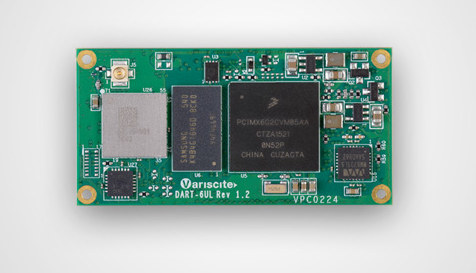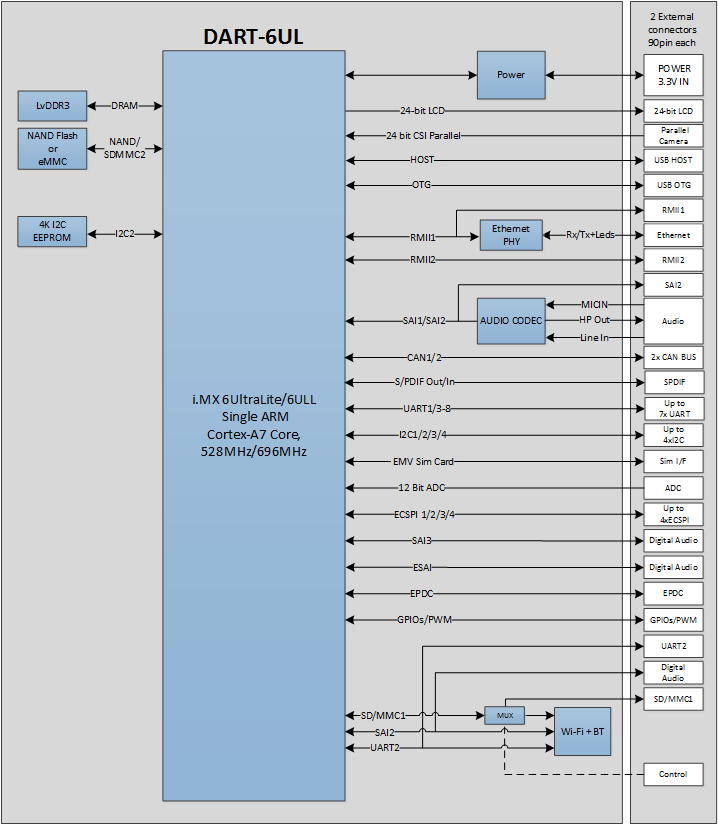Intel recently announced it will discontinue manufacturing and selling all SKUs of the Intel® Edison compute modules and developer kits.
The initial version of Edison was released in the beginning of 2014, with a second version being released by the end of 2014. It was intended for the IoT market, with dimensions of 35.5x25x3.9mm. The Edison features an Intel Atom processor, consisting of two Atom Silvermont cores running at 500MHz. It includes a fixed configuration of 1GB integrated RAM, and 4GB eMMC flash on-board. Dual-band (2.4GHz and 5GHz) Wi-Fi, Bluetooth 4.0 and USB controllers complete the package.
According to Intel’s announcement, the last shipment of Edison family boards is planned for December 2017. This announcement will have a critical impact on companies that already integrated the Edison board in their products, as well as the many companies that engaged in the development process of integrating the Edison board into their products.
While some of these companies are rushing to place their orders by the end of the year, other companies are already looking for an alternative candidate to replace the Edison module. Naturally, the Edison alternative should be somewhat similar to the original selection, at least in terms of interfaces and connectivity. But if you are looking for an alternative solution, you should take into account that this is a rapidly evolving market, so the alternatives offered today can deliver higher performance solutions than those delivered in 2014, when Intel launched Edison.

One suitable alternative for the IoT segment is the DART-6UL System on Module platform, developed by Variscite. The DART-6UL, measuring only 25x50mm, is a highly flexible SoM based on NXP i.MX 6UltraLite / i.MX 6ULL ARM Cortex™-A7 processor, with frequencies up to 900MHz.
The following comparison table will help you see the similarities and the upgraded features:
|
Intel Edison |
DART-6UL |
|
| CPU | ||
| CPU Name | Intel® Atom™ Silvermont CPU and Intel® Quark™ microcontroller | NXP i.MX6 UltraLite / i.MX 6ULL (Cortex™-A7) |
| CPU Cores | 2 | 1 |
| CPU Clock | 500 MHz | Up to 900 MHz |
| Memory | ||
| RAM | 1 GB LPDDR3 | 128 – 512 MB DDR3L |
| SLC NAND |
– |
128 – 512 MB |
| eMMC | 4 GB eMMC | 4 – 32 GB |
| Multimedia | ||
| 2D Graphics Acceleration |
– |
2D pixel acceleration engine (PxP) |
| Camera Interfaces |
– |
1x 24bit CPI |
| Display | ||
| Parallel RGB |
– |
1366 x 768 24-bit |
| Networking | ||
| Ethernet |
– |
2x 10/100 Mbps Ethernet |
| Wi-Fi | Broadcom* 43340 802.11 a/b/g/n; Dual-band (2.4 and 5 GHz) | Certified Laird/LSR sterling LWB /LWB5
DART-6UL: 802.11 b/g/n |
| Bluetooth | Bluetooth 4.0 | 4.1 / BLE |
| Audio | ||
| Headphone driver |
– |
Yes |
| Microphone |
– |
Analog |
| Digital audio serial interface |
– |
SSI(AUDMUX)/SPDIF |
| Line In/Out |
– |
Yes |
| Connectivity | ||
| SD / MMC | x1 | x1 |
| USB Host / Device | USB 2.0: 1x OTG | USB 2.0: 1x Host, 1x OTG |
| UART | x2 | x8, up to 3.6 Mbps |
| I2C | X2 | x4 |
| SPI | 1 controller with 2 chip selects | x4 |
| OS Support | ||
| Linux | Yocto | Yocto, Debian |
| Mechanical Specifications | ||
| Dimensions | 35.5 × 25.0 × 3.9 mm | 25 mm x 50 mm x 4.0 mm (SoM) |
| Electronic Specifications | ||
| Supply voltage | 3.3 to 4.5 V | 3.3 V |
| Environmental Specifications | ||
| Operating temperature | 0 to 40°C | Commercial temperature (0 to 70°C) Industrial temperature (-40 to 85°C) |
More details about Yocto and Debian support can be found in the DART-6UL Wiki.

Disclosure: This post has been sponsored by Variscite.

Jean-Luc started CNX Software in 2010 as a part-time endeavor, before quitting his job as a software engineering manager, and starting to write daily news, and reviews full time later in 2011.
Support CNX Software! Donate via cryptocurrencies, become a Patron on Patreon, or purchase goods on Amazon or Aliexpress




